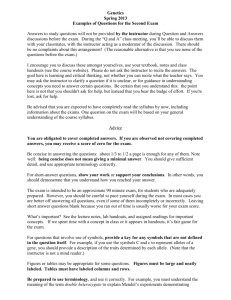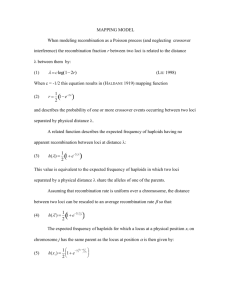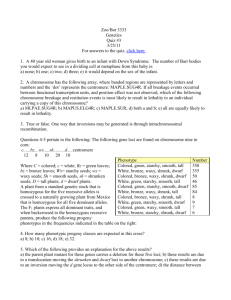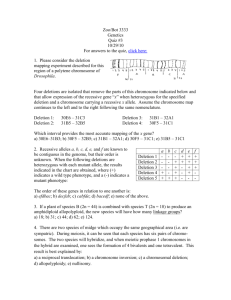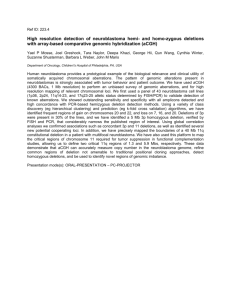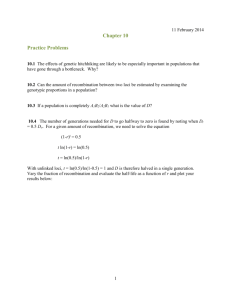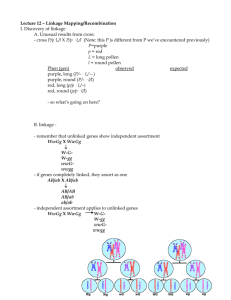Biology 2: Concepts in Genetics
advertisement
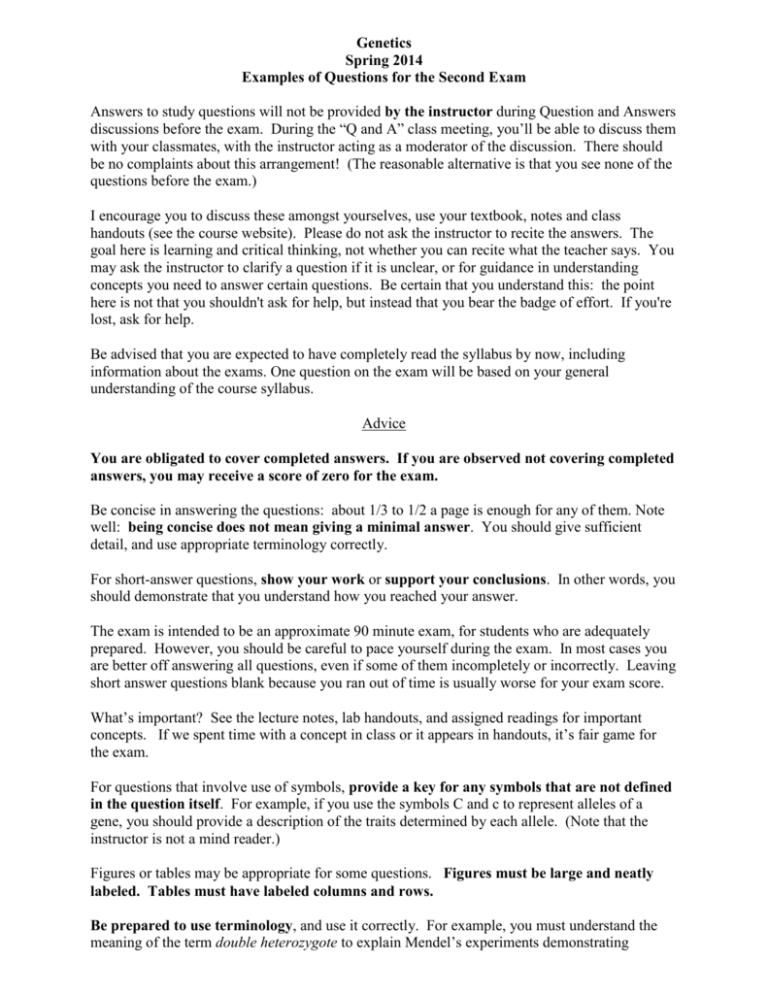
Genetics Spring 2014 Examples of Questions for the Second Exam Answers to study questions will not be provided by the instructor during Question and Answers discussions before the exam. During the “Q and A” class meeting, you’ll be able to discuss them with your classmates, with the instructor acting as a moderator of the discussion. There should be no complaints about this arrangement! (The reasonable alternative is that you see none of the questions before the exam.) I encourage you to discuss these amongst yourselves, use your textbook, notes and class handouts (see the course website). Please do not ask the instructor to recite the answers. The goal here is learning and critical thinking, not whether you can recite what the teacher says. You may ask the instructor to clarify a question if it is unclear, or for guidance in understanding concepts you need to answer certain questions. Be certain that you understand this: the point here is not that you shouldn't ask for help, but instead that you bear the badge of effort. If you're lost, ask for help. Be advised that you are expected to have completely read the syllabus by now, including information about the exams. One question on the exam will be based on your general understanding of the course syllabus. Advice You are obligated to cover completed answers. If you are observed not covering completed answers, you may receive a score of zero for the exam. Be concise in answering the questions: about 1/3 to 1/2 a page is enough for any of them. Note well: being concise does not mean giving a minimal answer. You should give sufficient detail, and use appropriate terminology correctly. For short-answer questions, show your work or support your conclusions. In other words, you should demonstrate that you understand how you reached your answer. The exam is intended to be an approximate 90 minute exam, for students who are adequately prepared. However, you should be careful to pace yourself during the exam. In most cases you are better off answering all questions, even if some of them incompletely or incorrectly. Leaving short answer questions blank because you ran out of time is usually worse for your exam score. What’s important? See the lecture notes, lab handouts, and assigned readings for important concepts. If we spent time with a concept in class or it appears in handouts, it’s fair game for the exam. For questions that involve use of symbols, provide a key for any symbols that are not defined in the question itself. For example, if you use the symbols C and c to represent alleles of a gene, you should provide a description of the traits determined by each allele. (Note that the instructor is not a mind reader.) Figures or tables may be appropriate for some questions. Figures must be large and neatly labeled. Tables must have labeled columns and rows. Be prepared to use terminology, and use it correctly. For example, you must understand the meaning of the term double heterozygote to explain Mendel’s experiments demonstrating Independent Assortment. It’s too easy to veer off course when you don’t know the correct term for a concept and instead try to explain it in common language. Questions: These are examples of questions that represent the types of questions that could appear on the exam. It is not a comprehensive guide to what might appear on the exam. See the lecture notes, lab handouts, and assigned readings for other important concepts. 1. A series of two-point crosses were carried out among seven loci (a, b, c, d, e, f, and g), producing the following recombination frequencies. Using these recombination frequencies, map the seven loci, showing their linkage groups, the order of loci in each linkage group, and the distances between the loci of each group. Loci Recombination frequency (%) frequency (%) a and b 10 a and c 50 a and d 14 a and e 50 a and f 50 a and g 50 b and c 50 b and d 4 b and e 50 b and f 50 b and g 50 Loci c and d c and e c and f c and g d and e d and f d and g e and f e and g f and g Recombination 50 8 50 12 50 50 50 50 20 50 2. The location of six deletions have been mapped to the Drosophila chromosome. Recessive mutations a,b,c,d,e, and f are known to be located in the same region as the deletions, but the order of the mutations on the chromosome is not known. “m” represents the mutant phenotype and a plus sign “+” represents the wild type. Shown below is the area of deletion for each of 6 deletions. Based on this information, map the genes in the correct order in the chromosome. Normal Chromosome _____________________________________________________________________ Deletion #1 Deletion #2 ------------------------------------------------ Deletion #3 ------------------------------- Deletion #4 --------------------------- Deletion #5 ---------------- Deletion #6 ---------------------------Mutations c d e f m + + m + + + + m m m + m m m + + m m + + m + + Deletion 1 2 3 4 5 6 a m m + + + + b + + m + + m 3. The following testcross produces the progeny shown: AaBb x aabb → 53 AaBb, 8 Aabb, 10 aaBb, 60 aabb. Were the genes in the AaBb parent in coupling or in repulsion? (and explain your answer) What is the recombination percentage between A and B loci? 4. See question 7.18 in textbook (page 198) 5. Contrast the lytic and lysogenic cycles, and how this leads to either generalized or specialized transduction. 6. Define transduction, conjugation, and transformation. 7. Compare of contrast each of the following: a. F- and F+ bacterial cell b. Hfr and Fʹ bacterial cell 8. Draw a chromosome with 6 genes labeled on it and indicate the position of the centromere. Then draw the same chromosome as it would look with the following: reverse duplication, tandem duplication, translocation, paracentric inversion, and pericentric inversion (separate drawing for each). 9. See question 9.23 in textbook (page 266) 10. See question 9.42 in textbook (page 268) 11. Contrast each of the following pairs of concepts: a. Trisomic vs. triploid b. Aneuploidy vs. polyploidy 12. Why are polyploids with even multiples of chromosome sets usually more fertile than polyploids with odd numbers of chromosome sets? 13. In a short paragraph or two, discuss the significance of the following scientists’ experiments/findings: a. Franklin b. Hershey and Chase 14. In a short paragraph or two, discuss the significance of the following scientists’ experiments/findings: a. Watson and Crick b. Griffith 15. Describe nucleotide structure. Contrast differences between RNA and DNA nucleotides, include specific components and their attachment sites to one another.
